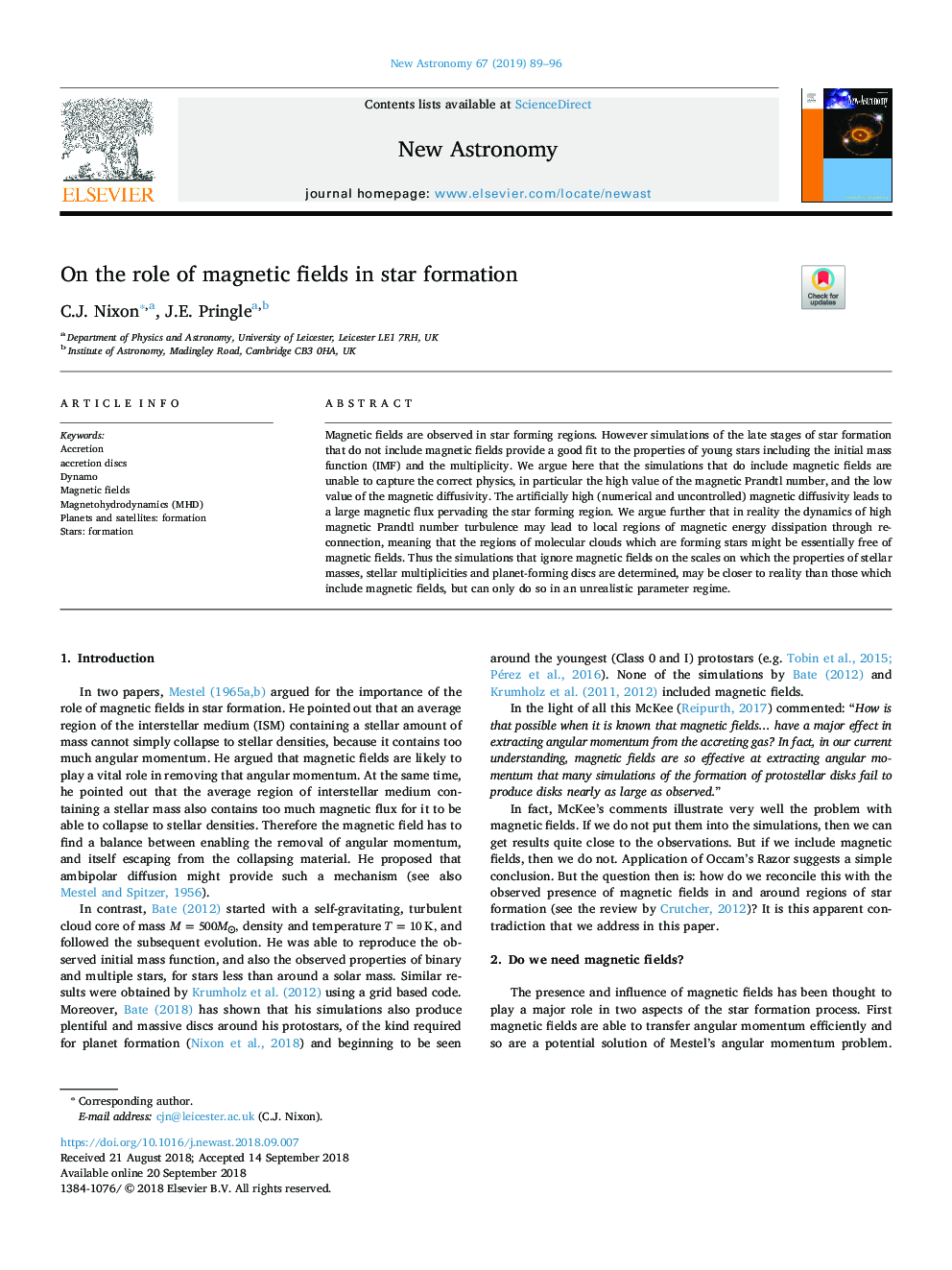| Article ID | Journal | Published Year | Pages | File Type |
|---|---|---|---|---|
| 11029470 | New Astronomy | 2019 | 8 Pages |
Abstract
Magnetic fields are observed in star forming regions. However simulations of the late stages of star formation that do not include magnetic fields provide a good fit to the properties of young stars including the initial mass function (IMF) and the multiplicity. We argue here that the simulations that do include magnetic fields are unable to capture the correct physics, in particular the high value of the magnetic Prandtl number, and the low value of the magnetic diffusivity. The artificially high (numerical and uncontrolled) magnetic diffusivity leads to a large magnetic flux pervading the star forming region. We argue further that in reality the dynamics of high magnetic Prandtl number turbulence may lead to local regions of magnetic energy dissipation through reconnection, meaning that the regions of molecular clouds which are forming stars might be essentially free of magnetic fields. Thus the simulations that ignore magnetic fields on the scales on which the properties of stellar masses, stellar multiplicities and planet-forming discs are determined, may be closer to reality than those which include magnetic fields, but can only do so in an unrealistic parameter regime.
Keywords
Related Topics
Physical Sciences and Engineering
Physics and Astronomy
Astronomy and Astrophysics
Authors
C.J. Nixon, J.E. Pringle,
